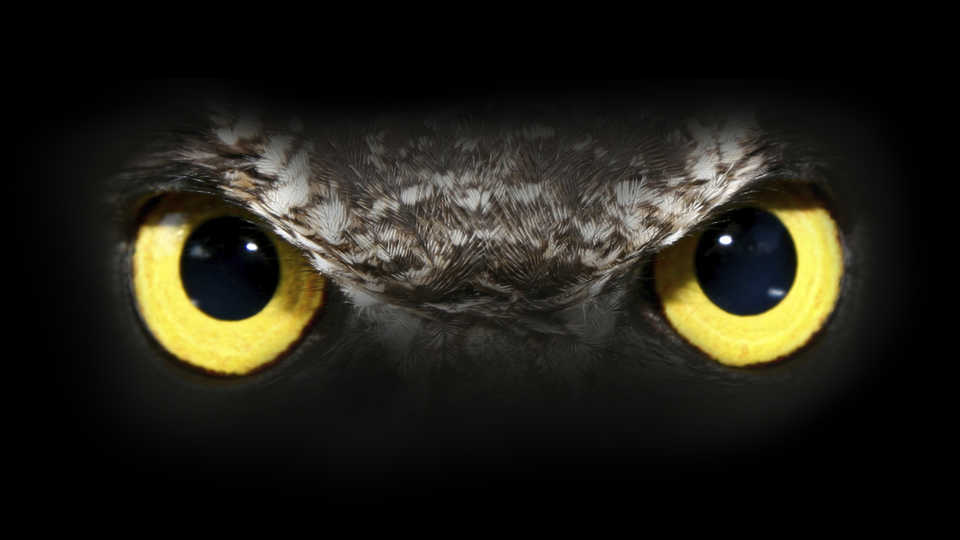Up all night, sleeps all day!
We have tons of wildlife that surrounds us here at Camp Foley in Pine River Minnesota. Some of the coolest creatures to see only come out at night! These are called nocturnal animals. Nocturnal animals are characterized by being active during the night and sleeping during the day. Nocturnal creatures generally have highly developed senses of hearing, smell, and specially adapted eyesight. Keep reading below to learn about some amazing creatures you are bound to see at night here at Camp Foley…

Brown Bats help keep the mosquitos in check at Camp Foley
Bats
Not all bats are nocturnal (meaning they’re awake at night). But those that are can locate insects to eat by emitting inaudible high-pitched sounds, 10-20 beeps per second, and listening to echoes. This is called echolocation. The most common bat found in Minnesota is The Big Brown Bat. The Big Brown Bat may be found throughout the state. This hardy species is capable of hibernating in places other than caves during the winter months. Hibernation sites may include buildings, where these bats may be encountered by people as the animals transition from their summer foraging areas. We see these bats at camp flying around at dusk eating up all the mosquitos and gnats. That’s why we love them!
Owls

Get up early or stay up late to hear an owl at Camp Foley
Great horned owls are the most common owl in our state. They begin nesting in January or February. They make a loud hooting sound and high-pitched screams. Why are owls nocturnal? They are adapted to hunt mice and other small mammals that are active at night. In addition, hunting at night helps owls avoid competing with hawks and eagles, which hunt during the day. Smaller owls usually forage at different times than big owls, to avoid becoming prey themselves. We may spot an owl here at Foley when going up into the woods to see our Treehouses and different camp sites.
American Red Fox

If you see a red fox at Camp Foley, you’ll be one of the few campers who has!
Red foxes are medium-sized carnivores in the dog family (Canidae). The major identification challenge is distinguishing red foxes from gray foxes. Red foxes have white tail tips, throats, and underfur, while gray foxes have black tail tips and yellow or orange coloration on a white throat/underfur. Red foxes tend to be slightly heavier than gray foxes, and red foxes have slightly longer muzzles than gray foxes. A few red foxes are black or silver in coloration, which reflects normal genetic variation within the species. They prefer to hunt late in the evening through until the early hours of the morning. The Minnesota red fox is an omnivore, meaning that it eats both plant and animal foods. Food items include small rodents, squirrels, woodchucks, rabbits, birds and eggs, amphibians, and reptiles. Foxes also will eat vegetation, fruits, nuts, insects, carrion, and garbage. It is very exciting and rare to see a fox here at Foley! Although it didn’t stop us from naming our youngest pack group after them.
Raccoons
Raccoons (Procyon lotor) are medium-sized omnivores in the procyonid family (Procyonidae). Although usually nocturnal, they can also be seen during the day. A black eye mask and bushy ringed tail are key characteristics that quickly distinguish raccoons from other mammals in the region.

Keep your trash in the can to keep the raccoons wild at Camp Foley
Raccoons also possess sharp claws, stocky build, and a broad head with pointed ears and a pointed snout. Sweet corn is a favorite food, though crayfish, frogs, insects, fruits, and bird eggs are staples in its diet. We tend to find the evidence of raccoons at camp more so than the raccoons themselves. But we have seen them from time to time getting very interested in our camp dumpster.
Porcupines
The porcupine is one of the most interesting and unusual wildlife species in Minnesota. Despite a very slow walking pace and a low reproductive rate, its coat of long, sharp quills enables the porcupine to live a long life by protecting it from predators. Their diet changes seasonally. In the winter, they primarily eat evergreen needles and the inner bark of trees, often feeding heavily on a single tree causing damage or death to the tree. In the spring and summer, porcupines shift to eating berries, seeds, grasses, leaves, roots and stems. We have been lucky enough to see porcupines around camp very often, depending on the year. Check out this blog throwback to learn even more about porcupines!

We don’t often see Porcupines at Camp Foley in Minnesota since they forage at night
We hope you enjoyed learning about some of our nocturnal friends here at Foley. Think Camp Foley might be a fun way to spend the summer, click here for more information! Want to set up a zoom to talk to an assistant director? You can do that here!

